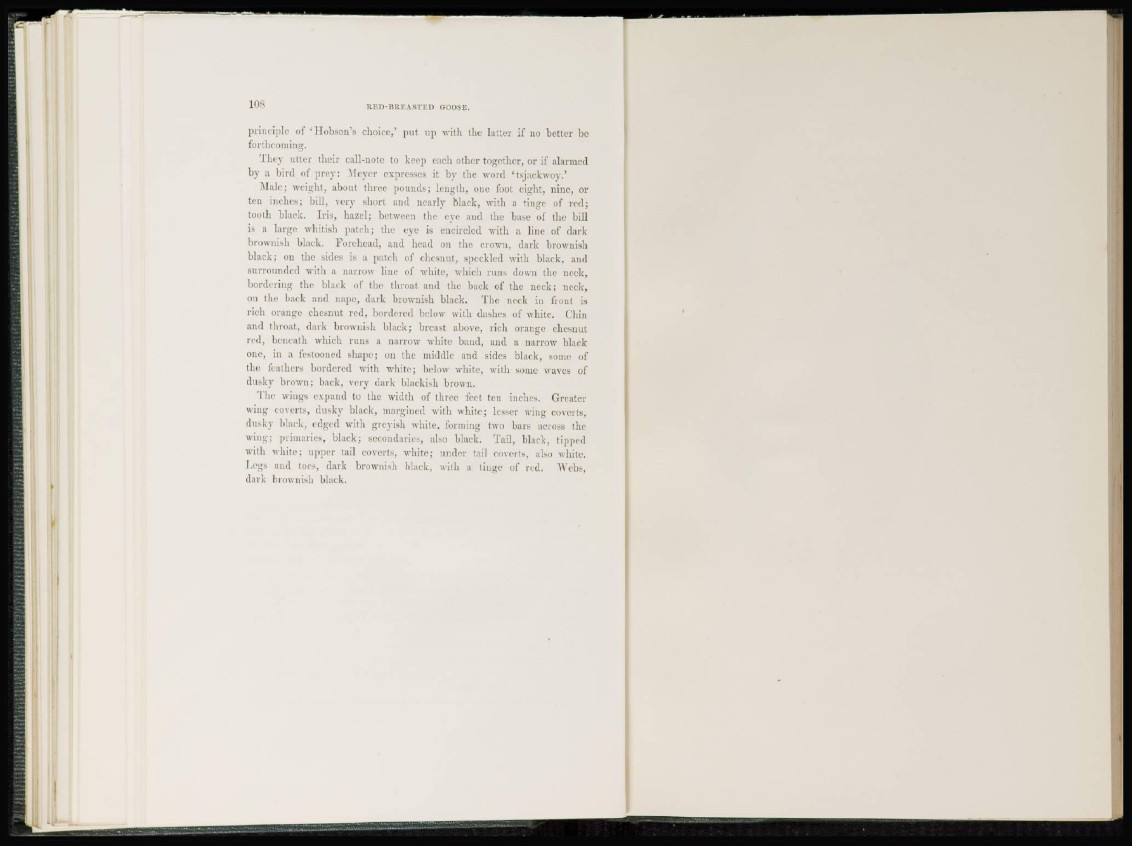
principle of 'Hobson's choice,' put up with the latter if no better be
forthcoming.
They utter their call-note to keep each other together, or if alarmed
by a bird of prey: Meyer expresses it by the word 'tsjackwoy.'
Male; weight, about three pounds; length, one foot eight, nine, or
ten inches; bill, very short and nearly black, with a tinge of red;
tooth black. Iris, hazel; between the eye and the base of the bill
is a large whitish patch; the eye is encircled with a line of dark
brownish black. Forehead, and head on the crown, dark brownish
black; on the sides is a patch of chesuut, speckled with black, and
surrounded with a narrow line of white, which runs down the neck,
bordering the black of the throat and the back of the neck; neck,
on the hack and nape, dark brownish black. The neck in front is
rich orange chesnut red, bordered below with dashes of white. Chin
and throat, dark brownish black; breast above, rich orange chesnut
red, beneath which runs a narrow white baud, and a narrow black
one, in a festooned shape; on the middle and sides black, some of
the feathers bordered with white; below white, with some waves of
dusky brown; back, very dark blackish brown.
'The wings expand to the width of three feet ten inches. Greater
wing coverts, dusky black, margined with white; lesser wing coverts,
dusky black, edged with greyish white, forming two bars across the
wing; primaries, black; secondaries, also black. Tail, black, tipped
with white; upper tail coverts, white; under tail coverts, also white.
Legs and toes, dark brownish black, with a tinge of red. Webs,
dark brownish black.